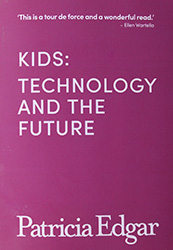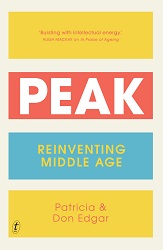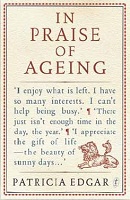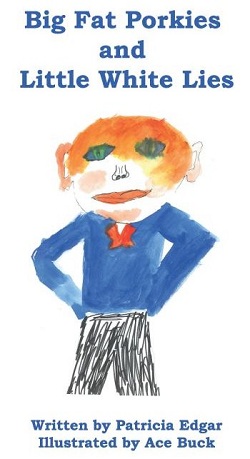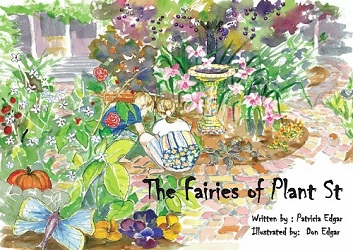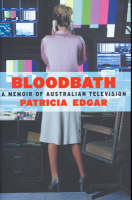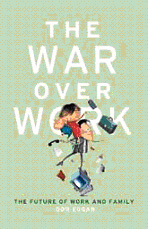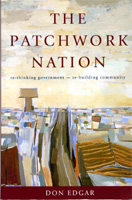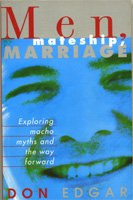
Patricia Edgar & Don Edgar

Marriage, family and the media
|
By Patricia Edgar - Monday, 13 July 2015 |
|
Marriage and the family were social inventions. 'They married and lived happily ever after': that ubiquitous story-ending mystified us, until we grew up and learnt how complex family life really is.
Recent decisions in favour of same-sex marriage in Ireland and the United States have redefined family life further. Yet in Australia we drag our feet. In part it is because the conventional concept of marriage and family has been firmly embedded in our psyches by the power of mass media. Television which held us back in our understanding of the family for decades is now leading the way.
In 1972 I published a report analyzing twelve of the most popular programs of the time. Marital relationships were harmonious. The male partner was middle-class, a professional breadwinner, while the women were financially-dependent housewives (or secretaries) responsible for domestic work and if single, desperate to get married. They lacked a say in major decisions and their interests were confined to trivialities.
Betty Friedan's book The Feminine Mystique, released in 1963, exposed the 'happily ever after' myth but did little to educate mainstream television. Twenty years after the book's release the Australian Institute of Family Studies analysed all television programs which depicted family life and found they still portrayed middle-class, Anglo Saxon dominant males in white-collar full-time employment.
Working class families, working women, the aged, unemployed, single mothers, ethnic and indigenous families got barely a mention. Gay families were nowhere on the media radar. However this dominant picture presented was the culture of only a small minority.
For by 1980 only 25 per cent of families came close to the 'ideal' model; 42 per cent of married women were in the workforce in 1982 and two million people were on welfare support. Sole parent families were on the rise following the introduction of no-fault divorce and we were beginning to recognize that the family, as well as providing our focus of love and support, is the most violent institution in our society.
Scholars began asking whether this distorted image of family life could be affecting policy concerning the needs of families. John Howard was led astray. In December 1988 as leader of the Federal opposition he launched his Future Directions Report in front of a backdrop depicting a smiling couple with two children, standing in front of a house (with a car) bordered by a white picket fence. (Beaver Cleaver lived in such a house in the 50's and 60's).
That image was intended to summon up in the public mind, the primacy of the family, the dream of home ownership, the rewards of hard work, the importance of private enterprise and law and order. John Howard believed these were the timeless values of the traditional family. His plan was for 'One Australia' which meant a limit on Asian migration and a move away from multi-culturalism.
The plan was firmly rejected. Howard lost the leadership and retreated to ponder his next move.
Evidence of real family life had been circulating from 1980 when the Institute of Family Studies was established. Howard recanted his social position on immigration and 'the white picket fence ideal' of family life, discovering 'Howard's battlers'. With this vision he swept to power as Prime Minister in 1996.
By then the traditional model of television had been challenged by new technology. Cable meant multi-channels and drama channels like Showtime TV became creative powerhouses developing ground-breaking series for diverse audiences. In turn free-to-air was forced to compete with more adventurous drama. So began the golden age of television.
The Huxtables in The Cosby Show (1984), still professionals, were black. Rosanne (1988- 97) was working class and so popular she defied her producer to insist on bringing a gay character Nancy into the show. Australia introduced gay characters early, in No 96 (1972-76), The Box (1974-77) and Prisoner (79-86). Thirty Something (87-91) was the first prime-time show to put two men in a bed together. In Brothers and Sisters (2006), Kevin and Scotty were investigating surrogacy. Gay characters are now part of the fabric of television family life.
As well television families now have problems. Married with Children (87-97) showed what dysfunctional families could be like with The Simpsons (1989), becoming the most famous dysfunctional, working- class family on television. A single mother supported her family selling dope in Weeds (2005-2012), and House Husbands (2012) put the men in charge domestically. Redfern Now (2012) was a break-through in depicting Aboriginal families.
These diverse programs have helped to legitimise family life in all its verities.
But government is slow to respond to social reality. By 2004 government family policy was about 'the good of the nation' with the announcement of a new payment of $3,000 for all new mothers, irrespective of income, rising to $5,000 from July 1, 2008. Single parents, de factos, ethnics and welfare recipients were eligible. The emphasis was on having babies not on ideal family forms. Homosexual families were not part of the plan. That same year the Howard government changed the Marriage Act to prevent same-sex marriage.
The diverse media we have available today continue to innovate and lead public opinion. Netflix has introduced us to Grace and Frankie, the wives of two lawyers who have been colleagues for 40 years. The wives are taken out to dinner to be told their husbands have fallen in love with each other and want to get married. They are old, over 70, but they have been at it for years.
Amazon's first family series, Transparent, is about a 70 year old father of three grown children who comes out to his dysfunctional family, as a transsexual. The third series has been commissioned before the second goes to air. Where will it end? I read, in the USA transsexuals are demanding their own toilets.
But our Sisyphean Prime Minister is doing his best with his henchmen (Abetz, Fight for same sex marriage is not over, The Age, July 2) to keep us on the straight and narrow. Our Prime Minister may recall Sisyphus was condemned to an eternity of useless efforts and unending frustration.
